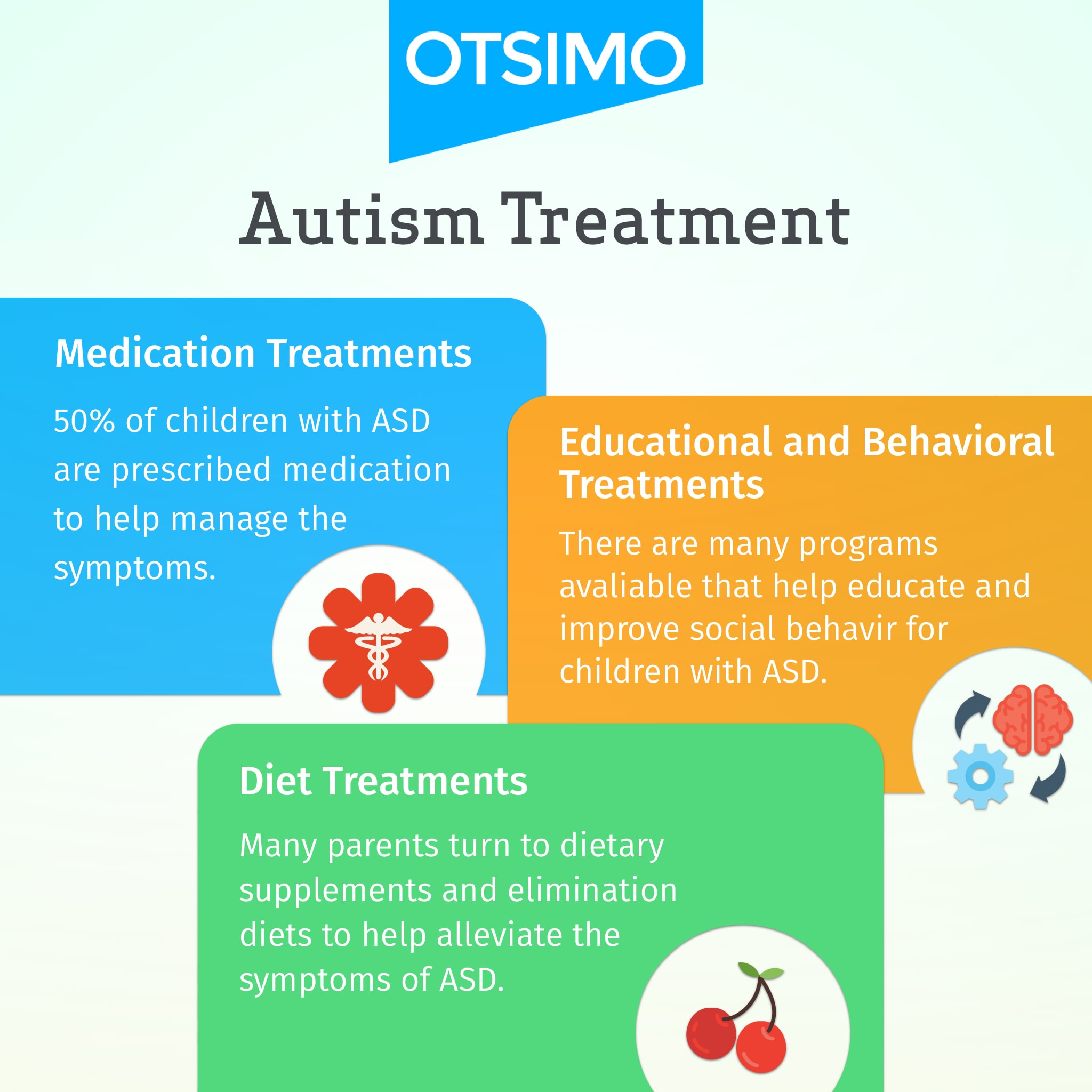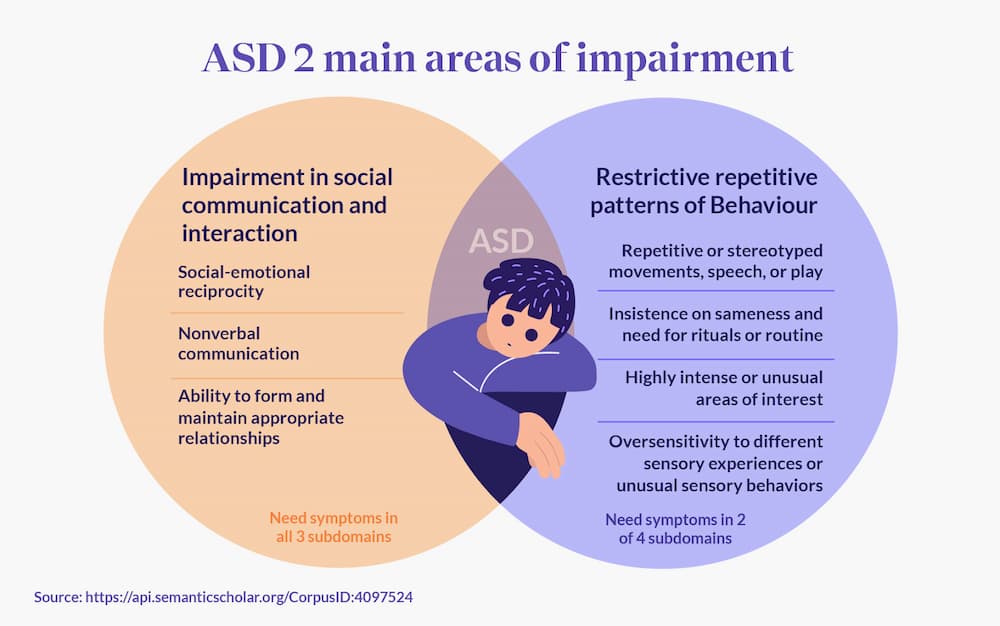Five practical strategies Autism Behavioral Therapy reduce anxiety
Five practical strategies Autism Behavioral Therapy reduce anxiety
Blog Article
Exploring Efficient Methods for Supporting People With Behavioral Autism
Sustaining people with behavioral autism needs a nuanced understanding of their special needs. What particular approaches can you implement to guarantee these individuals thrive?
Understanding Behavioral Autism: Secret Attributes and Obstacles
When you begin to comprehend behavioral autism, you'll observe numerous vital qualities and difficulties that define the experience for people. Several people with behavioral autism often have problem with interaction, making it hard for them to share their feelings or needs properly. You may observe repetitive actions, such as hand-flapping or shaking, which serve as coping systems for handling stress and anxiety or sensory overload. Social interactions may be challenging; individuals may find it hard to read social signs, resulting in misconceptions in partnerships.
It's essential to recognize that each person is distinct, and their experiences may differ. Recognizing these qualities allows you to come close to assistance with compassion, promoting a favorable link that can boost their wellness and motivate growth.
The Relevance of Personalized Interventions
When it concerns supporting individuals with behavior autism, individualized treatments are essential. By creating tailored treatment strategies that concentrate on individual toughness, you can significantly boost their growth. Collaborating with assistance groups assures everyone is straightened in giving the ideal care possible.
Tailored Treatment Plans
Creating tailored treatment plans is vital for properly supporting individuals with behavioral autism, as each person's needs, staminas, and obstacles differ substantially. By crafting these individualized strategies, you can resolve particular actions and objectives, making certain a much more focused technique. Begin by collecting comprehensive details regarding the individual, including their preferences, triggers, and past experiences. Team up with caregivers, specialists, and educators to identify methods that resonate with them. Consistently check progression and change the strategy as required, ensuring it continues to be appropriate and reliable. This flexibility not just fosters interaction but likewise promotes a sense of possession and empowerment for the person. Ultimately, tailored intervention plans can greatly boost the quality of assistance you supply, leading to even more significant outcomes.
Individual Staminas Evaluation
An individual staminas evaluation is necessary for establishing customized interventions for people with behavior autism. By concentrating on everyone's special capabilities, you can produce approaches that resonate with their abilities and interests. This technique not just improves interaction however likewise enhances self-confidence.
When you recognize toughness, like outstanding memory or artistic talent, you can customize interventions that leverage these areas. This not only makes discovering more effective but additionally fosters a sense of success. Remember, every person has unique capacities; recognizing them empowers you to craft meaningful experiences.
Incorporating these strengths right into healing practices and daily routines can cause improved results. Eventually, focusing on staminas guarantees that interventions are not just efficient however likewise improving for the individual.
Collaborative Assistance Teams
Recognizing individual toughness establishes the phase for creating collaborative support teams that concentrate on individualized interventions. By combining specialists, relative, and the people themselves, you produce a supportive network that tailors methods to meet details needs. Each employee adds one-of-a-kind understandings, guaranteeing a detailed method that resolves behavior obstacles effectively.
This flexibility is essential, as it helps every person engaged remain lined up with the person's preferences and goals. Additionally, engaging in this team-based technique encourages individuals with autism, advertising their self-advocacy and self-confidence.
Evidence-Based Communication Methods

When dealing with people on the autism spectrum, employing evidence-based interaction methods can significantly enhance their ability to attach and reveal themselves. Using visual supports, like photo timetables or interaction boards, assists clarify assumptions and cultivates independence. Simplifying language and using concrete terms permits for far better understanding, reducing irritation.
Incorporating social tales can prepare people for various scenarios, instructing them appropriate reactions and habits. Encouraging using assistive modern technology, such as speech-generating tools, equips people to connect a lot more properly. In addition, employing predictable environments and regular regimens can give a sense of security, making communication a lot more efficient.
Keep in mind to be client and provide time to process your words. Participating in energetic listening, where you show their sensations and ideas, can strengthen your link. By applying these techniques, you'll develop a more encouraging communication ambience for individuals with autism.
Creating Supportive Environments
Developing helpful settings for people with behavioral autism starts with executing organized regimens that supply predictability and safety and security. You'll also intend to develop sensory-friendly spaces that provide to individual demands, decreasing frustrating stimuli. In addition, making use of favorable support techniques can encourage wanted habits and cultivate a sense of accomplishment.
Structured Routine Implementation
Developing a structured regimen can substantially boost the setting for individuals with behavior autism. By creating a regular schedule, you provide predictability, which can reduce anxiousness and complication. A well-structured important site environment cultivates independence and self-confidence, supporting their total advancement.
Sensory-Friendly Spaces Design

Favorable Reinforcement Methods
When you include positive reinforcement methods right into your strategy, you can significantly improve the knowing and behavioral results for people with autism. This entails rewarding and recognizing preferred actions, which motivates repeating of those actions. Begin by identifying what encourages the specific-- be it commend, tokens, or unique tasks. Enhance favorable activities immediately to develop a clear connection in between actions and incentive. Uniformity is essential; guarantee that everybody associated with their care uses the same support approaches. You can also progressively raise the complexity of jobs as people become much more comfortable, enhancing their progress. By developing an environment where positive behaviors are recognized, you foster self-esteem and a feeling of achievement, eventually supporting their development and well-being.
Joint Methods: Functioning With Professionals and households

Entailing member of the family in decision-making equips them and boosts their capability to support their loved ones. Specialists, consisting of teachers and therapists, can offer valuable sources and training that further assist family members.
You need to also respect each party's viewpoint, identifying that family members know their child finest while professionals bring specialized expertise. By crafting individualized strategies together, you create a customized method that deals with one-of-a-kind demands. Autism Spectrum Therapies. Eventually, this partnership not just benefits the specific with autism yet also reinforces the support network bordering them, making it a lot more reliable and cohesive
Integrating Social Abilities Training
Building on the strong collaborations created between households and specialists, integrating social skills training can greatly boost the assistance given to individuals with behavioral autism. This training helps you educate crucial interaction skills, such as initiating discussions, recognizing non-verbal hints, and reacting suitably in social circumstances.
By utilizing structured activities, role-playing, and real-life scenarios, you create possibilities for method in a safe environment. Encourage individuals to take part in team setups where they can involve with peers, fostering friendships and enhancing their convenience in social contexts.
It is very important to tailor the training to each individual's unique toughness and difficulties, guaranteeing they really feel qualified and confident. Routinely integrating responses from both professionals and families can refine these methods, making social skills training much more effective. Eventually, you're empowering people with the tools they need to navigate social interactions efficiently and develop significant connections.
Checking Development and Adjusting Approaches
As you implement social skills training, it's critical to check progression and readjust techniques accordingly. Keep an eye on habits, noting setbacks and enhancements. Usage tools like checklists or graphes to imagine development and identify patterns. link Routinely evaluate your observations to This Site examine what's functioning and what isn't.
Involve the person in representation, asking how they feel about their development and what challenges they deal with. This responses is invaluable for tailoring your technique. Don't think twice to customize them. if certain approaches aren't producing outcomes.
Collaborate with other caretakers or experts for fresh point of views and understandings. By remaining responsive and alert, you create an environment that promotes growth and development.
Regularly Asked Inquiries
What Are the Usual Misconceptions Regarding Behavioral Autism?
You could assume behavioral autism only influences communication, but it incorporates far more. Many believe all individuals with autism act the same, neglecting their unique characteristics and abilities. It's important to comprehend each individual's distinctions.
How Can Innovation Assist in Supporting People With Behavior Autism?
Innovation can enhance communication, giving devices like apps for social skills and behavior monitoring. You can utilize digital fact for immersive experiences, and wearable tools can keep an eye on emotional states, helping you sustain individuals efficiently.
What Function Do Sensory Processing Issues Play in Behavioral Autism?
Sensory processing problems can significantly influence habits. You may notice that overwhelming sensory input leads to stress and anxiety or meltdowns. Understanding these difficulties assists you create a much more supportive setting for individuals experiencing sensory overload.
Are There Particular Dietary Suggestions for People With Behavior Autism?
Yes, certain dietary referrals can aid. You might consider a gluten-free or casein-free diet regimen, which some discover helpful (Autism Spectrum Therapies). Always seek advice from a health care expert before making substantial modifications to guarantee it's ideal for you or your enjoyed ones
How Can Peers Be Educated to Support Individuals With Behavioral Autism?
To enlighten peers, you can organize workshops, produce helpful materials, and encourage open conversations. Involving tasks, like role-playing situations, assist them comprehend difficulties encountered by people, fostering empathy and efficient assistance within the area.
Checking Out Effective Methods for Sustaining Individuals With Behavior Autism.
Developing customized intervention strategies is necessary for successfully supporting people with behavioral autism, as each individual's strengths, needs, and challenges differ significantly.An individual toughness assessment is essential for creating personalized interventions for people with behavioral autism.To sustain people with behavioral autism, making sensory-friendly areas is crucial, as it can significantly improve their comfort and emphasis.Collective techniques are important for supporting people with behavior autism, as they foster a strong collaboration between specialists and households.
Report this page